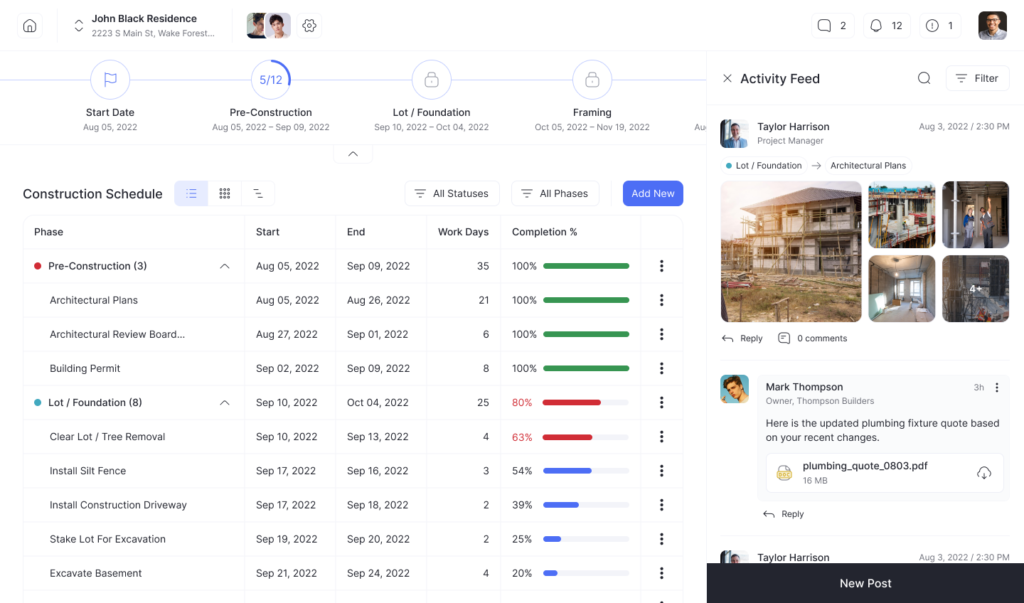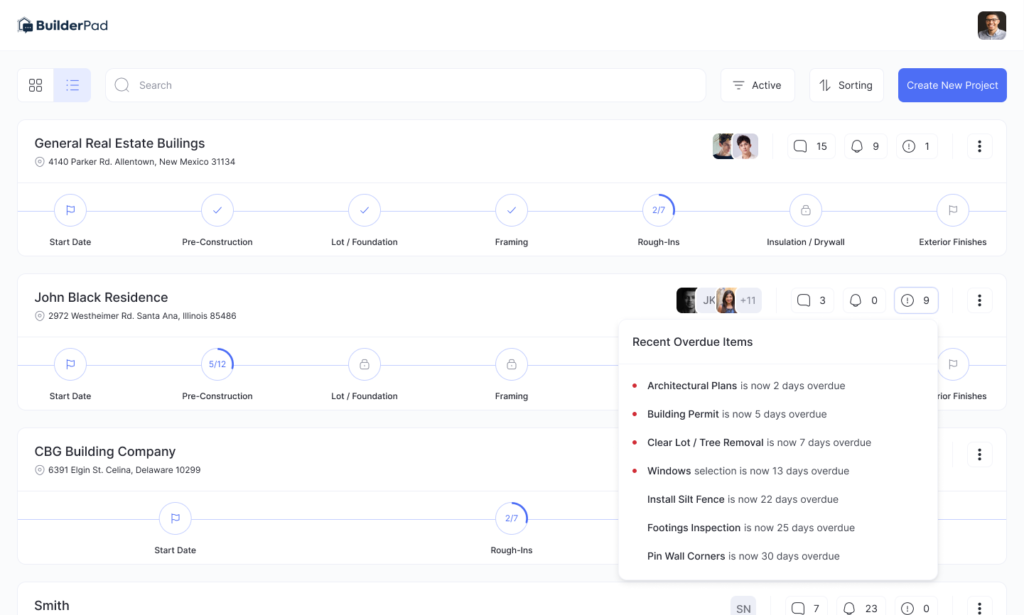The construction industry thrives on precision and timely execution.
Unfortunately, it’s easy for inefficiencies to creep in, leading to significant delays and cost overruns.
Eliminating inefficiencies requires a holistic examination of all processes and procedures.
The Underlying Problem: Inefficient Workflows
Every project relies on a series of interconnected tasks. A bottleneck in one area can have a cascading effect on the entire operation. Inefficient workflows stem from multiple root causes that must be proactively identified and addressed.
An inefficient workflow in the construction realm can take many forms:
- Poor communication: When teams don’t communicate effectively, it can lead to confusion about roles, responsibilities, and tasks. Misunderstandings can cause needless rework and delays. Establishing clear communication protocols from the start is essential.
- Outdated processes: Using old methodologies that haven’t evolved with new technologies or industry best practices. Clinging to older methods can stifle innovation and slow progress. Workflows must be continuously evaluated and optimized to keep pace with change.
- Lack of automation: Still relying on manual data entry or tracking can cause errors and slow down the entire process. Manual processes increase the chances of oversight and data inconsistencies. Automation is key for eliminating redundant manual work and boosting efficiency.
- Mismanagement of resources: Not having a clear understanding of resource allocation and utilization. Ineffective resource management can strain manpower and materials, affecting the project’s momentum. Resource planning should involve real-time tracking and forecasting.
These inefficiencies stem from outdated mindsets, lack of training, and resistance to change. Construction firms must proactively identify workflow gaps and underlying root causes. A piecemeal approach of addressing only visible symptoms will lead to limited success.
The Consequences

Every construction project has its unique challenges. However, common inefficiencies can exacerbate these challenges, turning minor hiccups into significant hurdles. The ripple effects of ineffective workflows can be widespread and detrimental.
- Delayed projects: Without a streamlined process, tasks that should take a day might stretch into weeks. Prolonged timelines can disrupt subsequent projects and affect overall productivity. Project delays must be prevented through proactive workflow optimization.
- Increased costs: Delays can result in overtime payments, higher material costs due to rush orders, and penalties for missing deadlines. These unforeseen expenses can eat into project margins and affect profitability. Inefficiencies can seriously impact the bottom line if left unaddressed.
- Reduced quality: In the rush to make up for lost time, the quality of work can suffer, leading to post-completion issues. Cutting corners can lead to safety risks and more significant issues in the future. Maintaining quality standards is imperative despite timeline pressures.
- Client dissatisfaction: A delayed project isn’t just a logistical problem; it can also harm your reputation and client relationships. Unhappy clients might not only withhold future business but also influence others through negative reviews. Client relationships must be proactively managed throughout a project.
The downstream impact of inefficient workflows is far-reaching, going beyond individual projects. Construction firms must recognize how these inefficiencies affect long-term growth, sustainability, and competitiveness.
Finding Solutions

Addressing inefficiencies requires a multifaceted approach. Combining modern technology with refined processes can help streamline operations and boost productivity. Solutions must be tailored, scalable, and consistently improved.
- Invest in technology: Today’s construction management software can automate many processes, reducing manual work and errors. Construction management software offers platforms to streamline everything from scheduling to communication. By integrating these tools, construction companies can achieve real-time collaboration and quick decision-making.
- Regular training: Continuously educate your team about the latest best practices, tools, and techniques in construction. This ensures that everyone is on the same page and equipped with the latest knowledge. Continuous learning can adapt the workforce to the evolving industry landscape, ensuring they’re always ahead of the curve.
- Clear communication channels: Establish regular check-ins and progress meetings. BuilderPad can enhance real-time communication and ensure that everyone stays informed. Transparent communication fosters trust and facilitates quicker problem resolution.
- Feedback loops: Encourage feedback from the ground up. Often, workers on-site have insights into inefficiencies that management might miss. This grassroots feedback can be invaluable in refining processes and identifying areas of improvement.
Key Takeaways:
- Adopt an agile, iterative approach to optimize workflows rather than one-off solutions.
- Leverage technology for automation, real-time insight, and enhanced collaboration.
- Promote a culture of continuous learning and soliciting end-user feedback.
- Institute metrics to quantify workflow gaps and measure improvements over time.
The Road Ahead
Inefficiencies in construction workflows can’t be eradicated overnight. However, with a committed approach and the right tools in hand, these challenges can be overcome.
Recognizing and addressing these inefficiencies is the first step towards a more streamlined, productive, and profitable future in construction.
With every efficiency gained, construction companies not only improve their bottom line but also bolster their reputation in the industry. Achieving efficiency requires unwavering commitment and a willingness to critically examine existing workflows.
Leveraging BuilderPad: The Ultimate Solution
In the quest to overcome inefficiencies and streamline construction workflows, the importance of the right tools cannot be overstated. Enter BuilderPad, a cutting-edge construction management software designed specifically with these challenges in mind.
BuilderPad offers an integrated platform that bridges communication gaps, automates repetitive tasks, and provides real-time insights into projects. With its intuitive dashboard, teams can easily monitor project progress, allocate resources optimally, and identify potential bottlenecks before they escalate.
? Seamless Communication: BuilderPad facilitates instant communication between teams, stakeholders, and clients. With all discussions and decisions documented in one place, miscommunication becomes a thing of the past.

? Real-Time Insights: With BuilderPad, managers have a bird’s eye view of every project, helping them make informed decisions and keeping projects on track.

? Continual Learning: BuilderPad offers a all-in-one dashboard for all the stakeholders to share resources and updates.
In conclusion, while there are myriad challenges in construction workflow management, solutions like BuilderPad are leading the way in addressing these head-on.
Adopting such robust tools is no longer a luxury but a necessity for construction businesses aiming to stay ahead of the curve, ensuring projects are completed efficiently, on time, and within budget.







